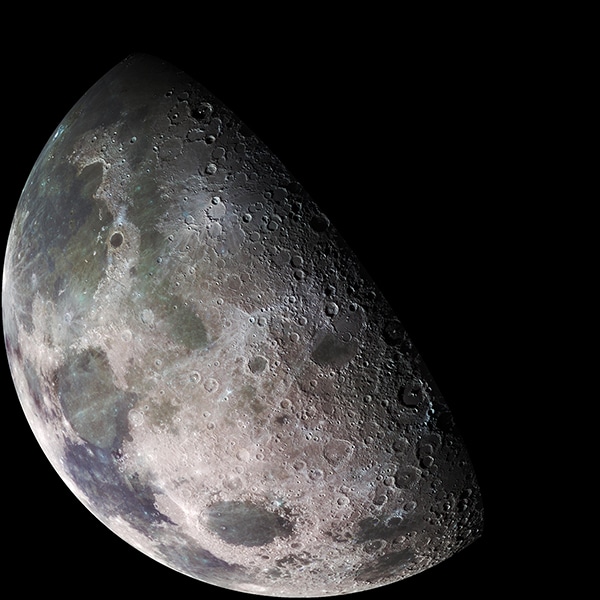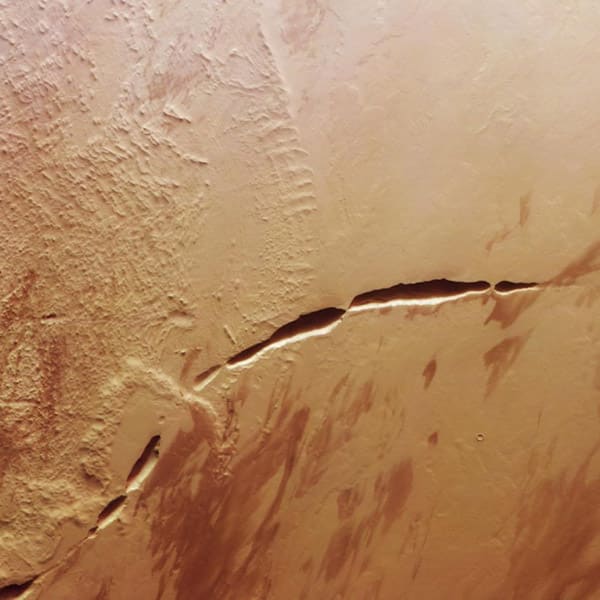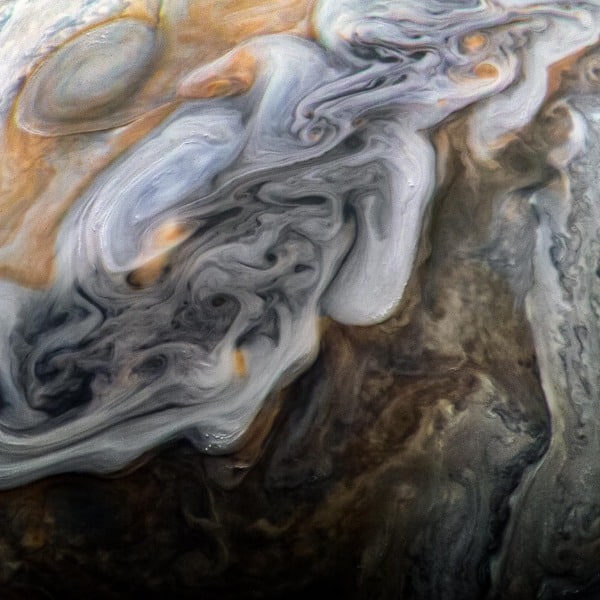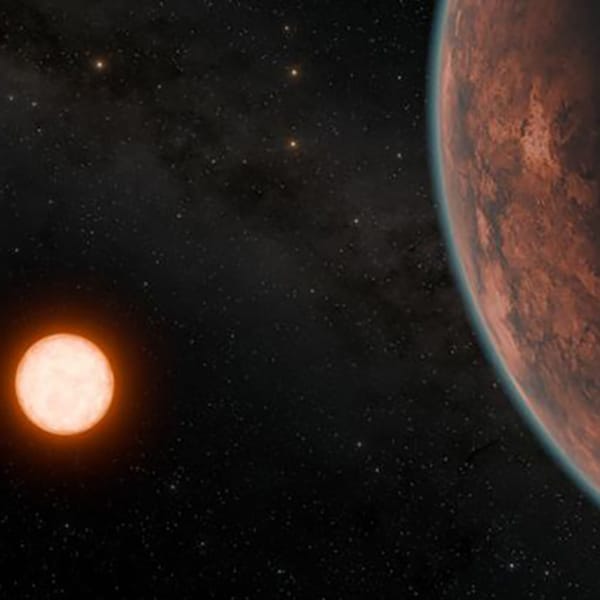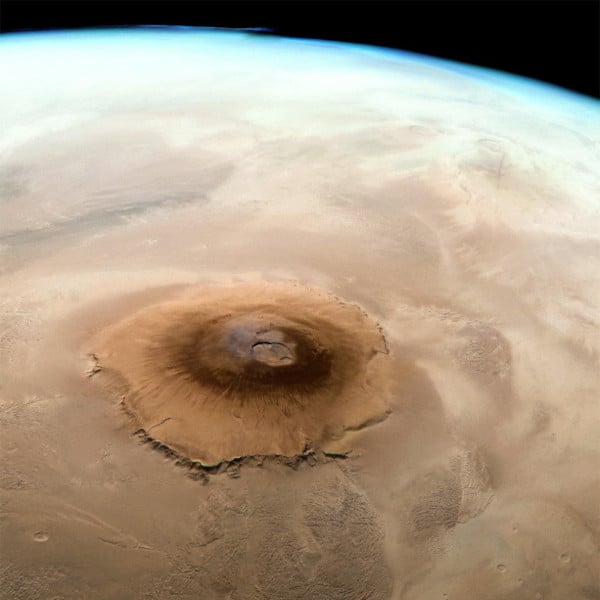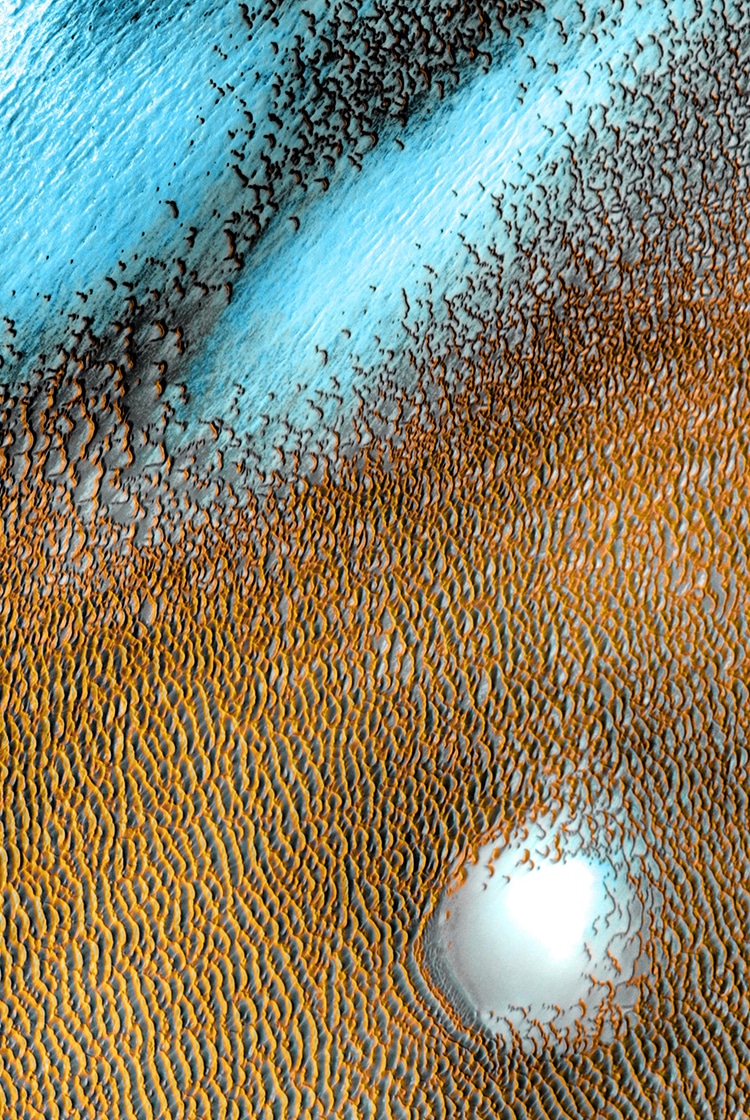
Photo: NASA/JPL-Caltech/ASU
Mars is known as the “Red Planet” for its rusty color—the result of the iron content in the soil. However, like Earth, the planet has polar regions and active weather patterns in its thin atmosphere. NASA has released an infrared image of the surface of Mars captured by their Mars Odyssey Orbiter. The image of rolling blue and gold dunes shows a side of the planet few see—an actively changing and varied landscape rather than simple swirling dust. It is released as part of NASA's celebrations for the 20th anniversary of Odyssey's mission to Mars.
On April 7, 2001, the Mars Odyssey spacecraft launched from Cape Canaveral Air Force Station in Florida. Still circling the Red Planet, the Odyssey orbiter is the oldest craft still working around Mars. It is equipped with an infrared camera known as the Thermal Emission Imaging System (THEMIS). The camera captures the changing temperatures of Mars' surface, providing valuable information regarding the planet's composition and surface features.
The image of rolling blue dunes and windswept golden sands is actually a thermal image—the yellow indicates warmer temperatures, and the blue shows cooler regions. It is a composite of images captured between December 2002 to November 2004 by THEMIS. The final image shows a region 19 miles wide near the northern polar cap of Mars. The winds in this region have carved the distinct pattern visible in the dunes. These dunes cover an area the size of the state of Texas. While the dunes would not truly be “blue” to the human eye, the image is evidence of the varied landscape of Mars. It is also a testament to how far knowledge of Mars and its environs has advanced since Odyssey's launch in 2001.
NASA has released a thermal image of blue-tinted dunes on Mars, AKA the red planet.
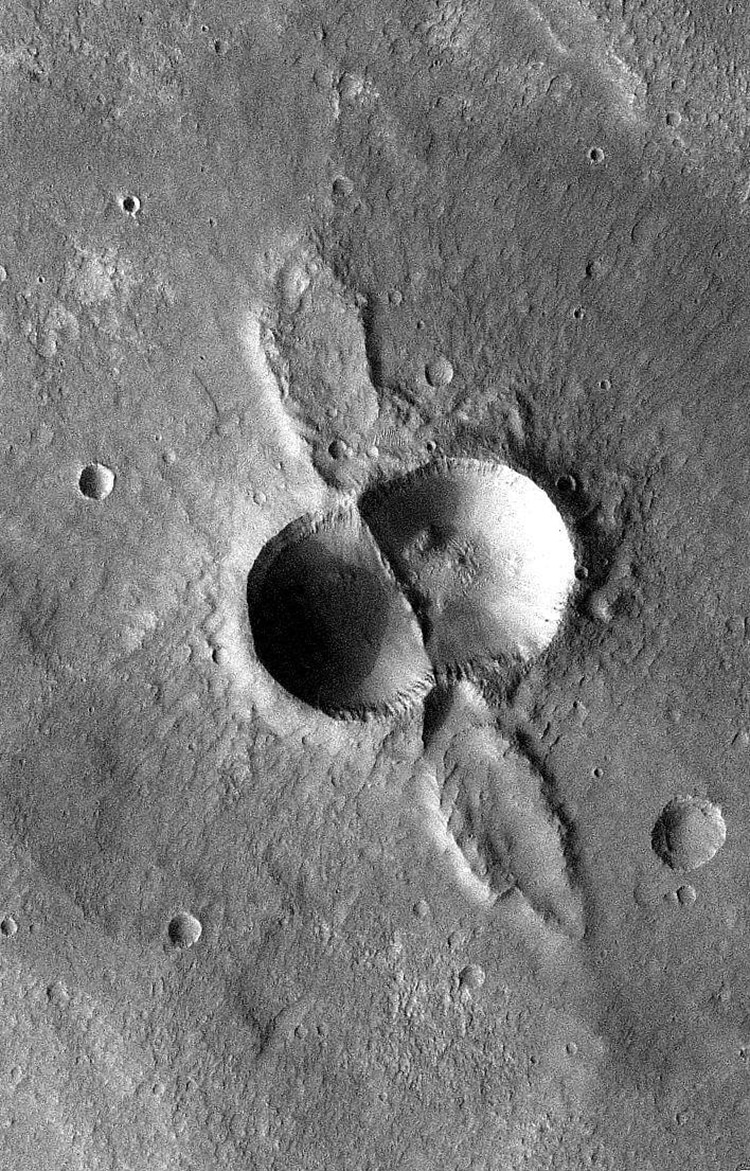
THEMIS image from the Odyssey Orbiter showing a double-bowl crater on Mars' surface, caused by a meteorite splitting before impact. (Photo: NASA/JPL-Caltech/ASU)
Released in celebration of the Mars Odyssey Orbiter's 20th anniversary, the image is evidence of how far knowledge of Mars and its environs has advanced since Odyssey's launch in 2001.

NASA's 2001 Mars Odyssey launch in Florida, April 2001. (Photo: NASA)
Related Articles:
NASA Shares Spectacular 10-Year Time-Lapse Video of the Sun
NASA Confirms That There Is Actually Water on the Moon
Explore Sounds and Images From Mars Sent Home From NASA’s Perseverance Rover
LEGO Worked With NASA To Create Its Most Detailed Space Shuttle Discovery Set Yet














































































